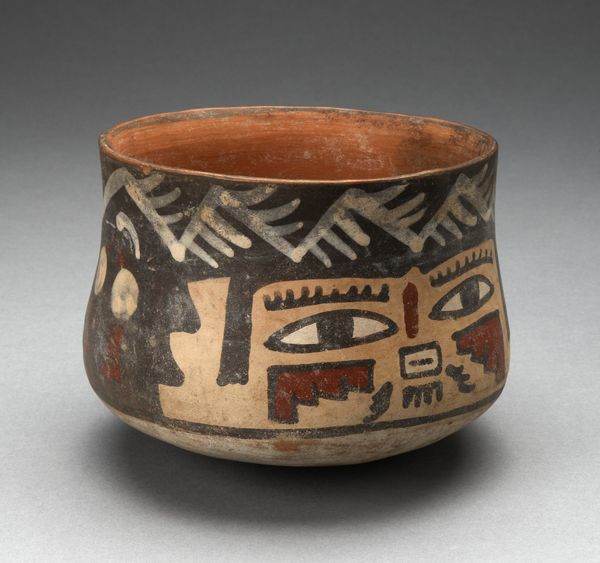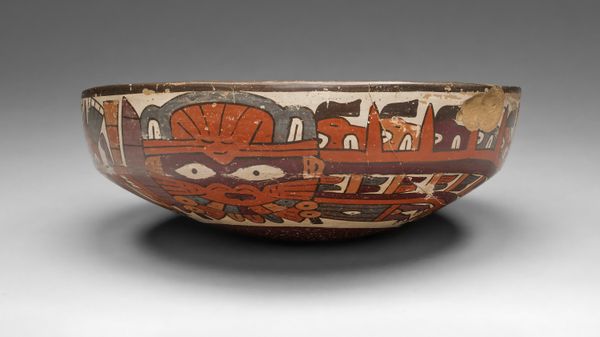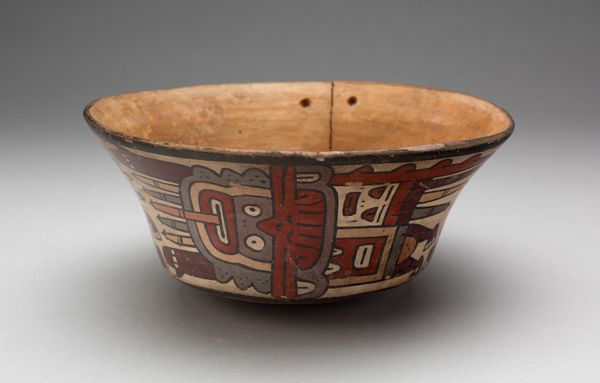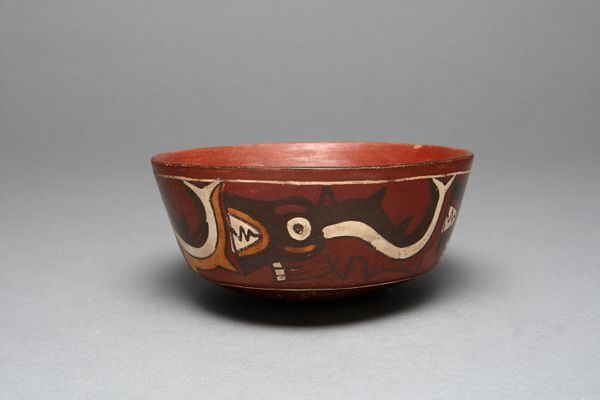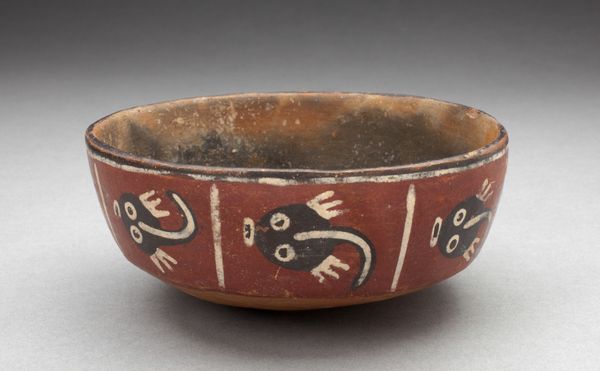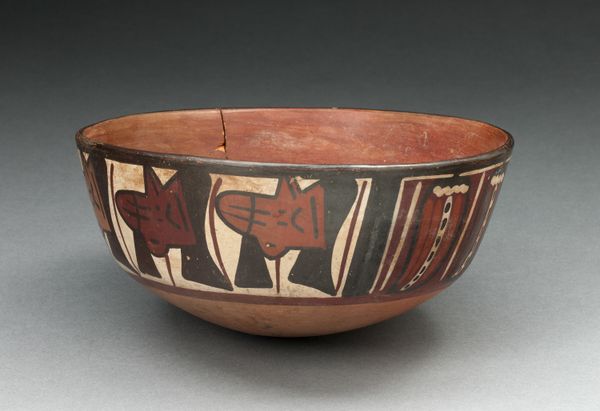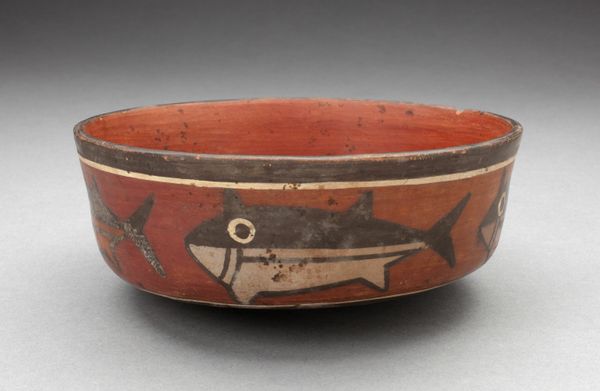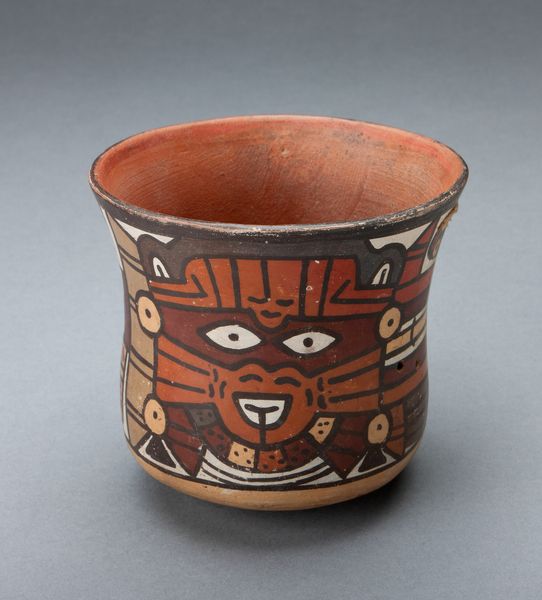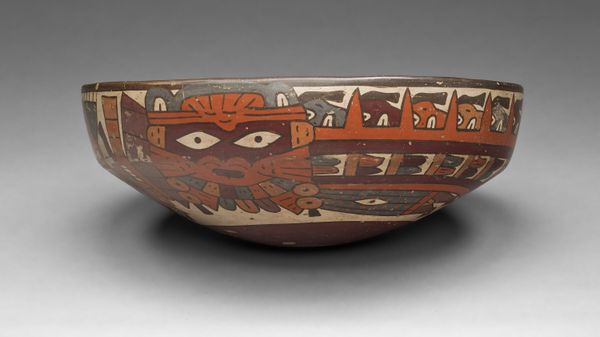
Bowl Depicting Costumed Ritual Performer with Serpent Attributes c. 180 - 500
0:00
0:00
ceramic, inorganic-material
#
3d printed part
#
war
#
product fashion photography
#
ceramic
#
jewelry design
#
round design
#
retro 'vintage design
#
vessel
#
stoneware
#
wash background
#
inorganic-material
#
latin-american
#
ceramic
#
nostalgic styling
#
cartoon carciture
Dimensions: 9.5 × 18.4 cm (3 3/4 × 7 1/4 in.)
Copyright: Public Domain
Curator: Here we have a Nazca bowl from around 180 to 500 CE, currently held in the Art Institute of Chicago. The piece, made of ceramic, is titled "Bowl Depicting Costumed Ritual Performer with Serpent Attributes." Editor: My first thought is how striking the figures are against that deep reddish-orange ground. The bold lines and abstracted forms—it feels incredibly powerful and otherworldly. Curator: The design choices here are quite sophisticated. Observe the way the artist uses line—both to define form and to create a sense of movement. Note the color relationships, how the palette, while limited, maximizes contrast. Editor: Indeed. That central figure is unforgettable. The serpent imagery is so prominent; serpents often represent duality—earth and water, life and death. Given its appearance on a ritual bowl, what symbolic weight might the serpent lend? Curator: We can certainly see potential symbolism, especially with what looks like a performer costumed to engage this image. If we break it down visually though, it creates an echo with its geometry on a ceramic object made using natural sources. The way these features are drawn creates a sort of meta-narrative here. Editor: Perhaps, its role was part of rituals to invite transformation. Even the way the "eyes" are rendered—perfect circles with hollow centers—lend to an unnerving gaze. They seem to look both inward and outward, connecting to hidden spiritual planes and into us viewers centuries later. Curator: It could point to how formal repetition builds meaning, with geometry, circles and straight lines used repeatedly to tie each plane together on the vessel. Editor: Ultimately, viewing an object like this, separated from its original context, asks us to ponder the resilience of cultural memory. What endures? How do these symbols and images continue to resonate? Curator: True. And yet, its lasting formal arrangements, the striking line work and balanced palette, continues to generate a type of meaning as well. Thank you. Editor: Thank you.
Comments
No comments
Be the first to comment and join the conversation on the ultimate creative platform.



